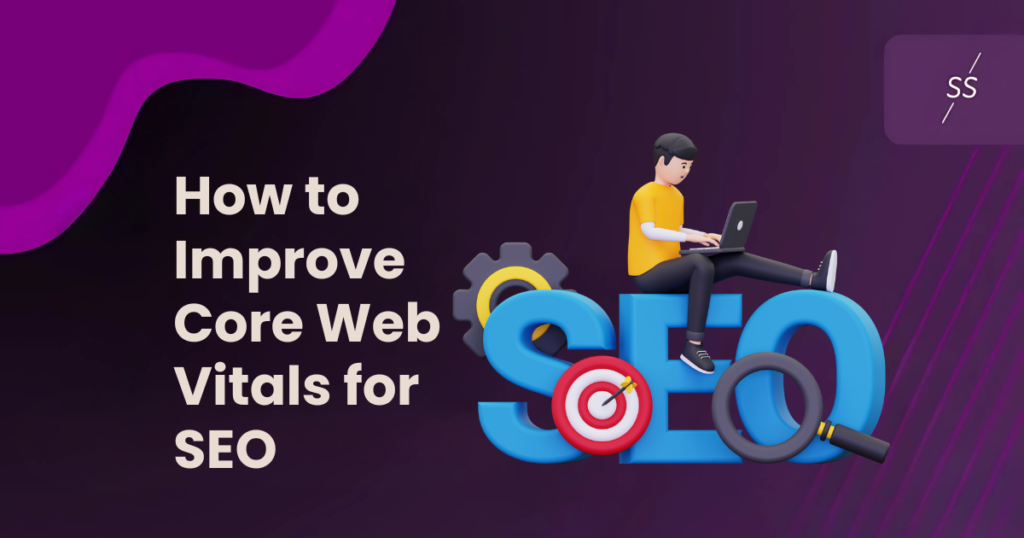Core Web Vitals
Imagine you’ve just launched a new online store. You’ve designed it to be visually stunning and filled it with quality products. However, when potential customers visit, they’re left staring at a blank page for what feels like forever. What’s worse? Some of them never return. Why?
Because site speed matters!
It’s not just about impressing visitors—it’s also about keeping them engaged, ranking higher on Google, and driving your business forward. If your website doesn’t meet Core Web Vitals, you’re missing out on valuable SEO opportunities.
What Are Core Web Vitals?
Core Web Vitals are a set of performance metrics introduced by Google that measure the user experience (UX) of a website. These metrics focus on speed, responsiveness, and visual stability—key elements that determine whether visitors stay or bounce. If your website isn’t up to par with these factors, it could suffer in search rankings.
Why Do Core Web Vitals Matter for SEO?
In 2021, Google made it clear that Core Web Vitals would be an essential ranking factor for SEO. Websites that provide a superior user experience are more likely to rank higher, as Google wants to promote sites that users enjoy browsing. If you want to improve your SEO performance, focusing on Core Web Vitals is the way to go.
How Core Web Vitals Influence SEO Rankings
Google’s goal is to provide users with the best possible experience. A fast, responsive website enhances that experience and helps improve rankings. Poor performance in Core Web Vitals directly impacts your search engine visibility. Here’s how:
LCP (Largest Contentful Paint)
A slow LCP can lead to a high bounce rate, which signals to Google that users are unhappy with your site. LCP measures how long it takes for the largest visible element (like a large image or text block) to load. Optimizing your LCP helps provide a quicker, more engaging experience for users, reducing abandonment and improving retention.
FID (First Input Delay)
If users can’t interact with your site immediately, they’ll leave, hurting your engagement metrics and rankings. FID measures the time it takes for your website to respond to a user’s first interaction, like clicking a button or typing in a search box. A slow FID can leave users frustrated and lead to poor conversion rates.
CLS (Cumulative Layout Shift)
If your site jumps around, users will feel disoriented and frustrated, ultimately affecting your retention rates. CLS measures the visual stability of your website by tracking how much content shifts during loading. A high CLS score can create a chaotic experience for users, leading them to leave your site before it fully loads.
The Role of SEO in Enhancing Core Web Vitals

SEO is not just about keywords—it’s about providing value to your users. As you improve Core Web Vitals, you’re making your site more accessible and user-friendly, which can improve your SEO in the long run. Combining great content with fast loading times, quick interactions, and stable visuals is the perfect way to satisfy both Google’s algorithm and your visitors.
Why Core Web Vitals Are Key to User Retention
The Importance of Fast Load Times
User retention begins with a website’s ability to load quickly. If visitors have to wait too long for a page to appear, they’re likely to leave and never return. Fast load times are crucial not only for user satisfaction but also for keeping visitors engaged on your site.
Creating a Smooth and Stable Experience
Core Web Vitals address key factors such as smooth interaction and visual stability, which contribute to a positive user experience. When your site responds quickly to user actions and doesn’t shift unexpectedly, visitors are more likely to stay engaged and return for future visits.
Google’s Role in User Retention
Google’s ranking algorithms take user engagement into account. A high bounce rate or low time spent on a page signals to Google that users aren’t satisfied with their experience. By improving Core Web Vitals, you can reduce bounce rates and enhance user retention, which ultimately boosts your SEO efforts.
How Slow Websites Impact Your Business and SEO
The Direct Impact on Conversions
A slow website can directly impact your revenue. Users expect fast-loading pages, and delays of even a second can result in significant losses in conversions. The longer a page takes to load, the more likely visitors are to abandon it.
Poor SEO Rankings Due to Slow Performance
Google prioritizes websites that provide an excellent user experience, including fast load times and smooth interactions. A slow site with poor Core Web Vitals scores is more likely to rank lower in search results, making it harder for potential customers to find your website.
Competing in a Fast-Paced Digital World
In today’s fast-paced online environment, users have many choices. If your website doesn’t meet performance standards, visitors will quickly turn to competitors with faster, more responsive sites. To stay competitive, improving Core Web Vitals is a must.
How to Improve Core Web Vitals for SEO

Improving Core Web Vitals is essential to SEO success. Here are actionable steps you can take:
Improve Page Load Speed (LCP)
- Optimize Images and Videos: Compress large files and use modern formats like WebP to reduce load times. This can dramatically reduce the page load time, enhancing the user experience.
- Leverage Browser Caching: Store frequently used files in the user’s browser cache to reduce loading times on repeat visits. This ensures that returning users enjoy faster access to your website.
- Minimize JavaScript and CSS: Remove unnecessary code and use asynchronous loading for scripts. This keeps the site lightweight and improves rendering times, directly impacting LCP performance.
Enhance Interactivity (FID)
- Optimize JavaScript: Reduce blocking JavaScript and load it asynchronously to ensure faster response times. This will help reduce FID, allowing users to interact with your website immediately.
- Use a Content Delivery Network (CDN): CDNs distribute your content closer to the user, decreasing load times. By using a CDN, users in different locations experience faster website performance, improving their interaction times.
- Prioritize Visible Content: Load critical content first to ensure users can interact with your site quickly. Prioritizing this content helps improve FID, reducing delays in user interactions.
Improve Visual Stability (CLS)
- Set Size for Images and Ads: Avoid layout shifts by defining dimensions for images, ads, and embeds before they load. This ensures that elements don’t shift unexpectedly, keeping your page layout stable.
- Use Font Loading Strategies: Ensure fonts load smoothly without causing page shifts. This creates a seamless experience for users and improves visual stability.
- Avoid Dynamic Content Changes: Avoid content that shifts after page load (like pop-ups or automatic carousels). By stabilizing content, you maintain a consistent experience for users, reducing visual disruptions.
Tools to Measure Core Web Vitals
To effectively track and improve your Core Web Vitals, several powerful tools can help you measure performance and identify areas for enhancement:
Google PageSpeed Insights:
Google PageSpeed Insight is one of the most widely used tools for measuring Core Web Vitals. It provides an in-depth analysis of your website’s performance on both mobile and desktop. PageSpeed Insights shows detailed scores for LCP, FID, and CLS, along with specific recommendations to improve them.
Lighthouse:
Lighthouse is an open-source, automated tool developed by Google that provides performance audits for web pages. It gives a comprehensive report, including Core Web Vitals, and offers suggestions for improving page speed, interactivity, and layout stability.
Chrome User Experience Report (CrUX):
CrUX aggregates real-world user data from Chrome users, offering insights into how your site performs in actual browsing conditions. CrUX provides Core Web Vitals data based on user interactions, helping you assess how your site is performing across a broad audience.
Web Vitals Chrome Extension:
This browser extension helps you measure the three Core Web Vitals metrics directly in the Chrome browser. It provides real-time data as you browse, giving you immediate insights into LCP, FID, and CLS for the pages you visit.
Google Search Console:
The Core Web Vitals report in Google Search Console provides insights into how your website is performing in terms of LCP, FID, and CLS. It shows which pages are meeting the thresholds and which need improvement, helping you track your progress over time.
By using these tools, you can monitor your site’s Core Web Vitals, understand where improvements are needed, and take action to enhance your website’s user experience, ultimately boosting your SEO rankings.
Common Mistakes to Avoid When Optimizing Core Web Vitals
Overlooking Mobile Optimization:
Google prioritizes mobile-first indexing, meaning your mobile site should be just as fast as your desktop version.
Ignoring User Experience:
Focus on real-world usage and not just lab data. Test performance with real users to identify pain points.
Focusing Only on Technical Improvements:
Improving page load speed, for instance, isn’t enough if your site lacks a good structure and content organization.
Top Strategies to Fix Common Core Web Vitals Issues
Optimize Your Images and Videos for Speed
Images and videos can be some of the heaviest elements on a webpage. Large, unoptimized files can drastically slow down your website and hurt your LCP score. By compressing images and using modern formats like WebP, you can significantly reduce load times. Additionally, lazy loading videos ensures they only load when needed, which helps improve overall site speed.
Streamline JavaScript and CSS for Faster Interactivity
JavaScript and CSS files often block the rendering of visible content on the page, leading to slower load times and poor FID scores. Minimize the amount of JavaScript and CSS on your site, remove unused code, and utilize asynchronous loading techniques to speed up interaction times.
Use a Content Delivery Network (CDN) to Improve Speed
A Content Delivery Network (CDN) helps distribute your website’s content across multiple global servers. When users access your site, the content is served from the server closest to their location, leading to faster load times. This can significantly improve your Core Web Vitals scores, especially for users in different geographic regions.
Prioritize Critical Content to Improve Load Times
To improve LCP, prioritize the loading of critical content. This includes the visible portion of the page, so users see important elements quickly. By deferring non-essential elements (like ads or additional images), you ensure that the most important content loads first, leading to faster page rendering and a better user experience.
Explore more: Hidden SEO Strategies to Boost Website Visibility
FAQ
What Are Core Web Vitals and Why Do They Matter?
Core Web Vitals are metrics that measure user experience in terms of page load speed, interactivity, and visual stability. They matter because Google uses them as ranking factors, affecting SEO and user satisfaction.
How Do I Check My Core Web Vitals Scores?
You can check your Core Web Vitals scores using tools like Google PageSpeed Insights, Google Search Console, or Lighthouse, which provide detailed performance insights and improvement recommendations.
What Is a Good Score for Core Web Vitals?
A good score for LCP is under 2.5 seconds, FID should be under 100ms, and CLS should be under 0.1. These benchmarks ensure a smooth and fast user experience.
Can Core Web Vitals Improvements Boost My Conversion Rate?
Yes, improving Core Web Vitals leads to a smoother, faster site that enhances user experience, increasing engagement and conversion rates by reducing friction during interaction.
Conclusion:
Core Web Vitals are more than just a passing trend—they’re a long-term strategy for ensuring your website performs well, engages users, and ranks higher on search engines. By focusing on site speed, mobile optimization, and visual stability, you can improve your website’s user experience, SEO performance, and ultimately, your business outcomes. By optimizing your Core Web Vitals, you not only improve your rankings but also enhance user engagement, leading to more conversions and a stronger online presence.
